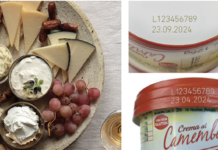Counterfeiting in the drinks industry is a multi-million pound industry. But, thanks to new security measures, including anti-refill and tamper evidence caps, many of which are designed using complex injection moulding techniques in the UK, drink companies are fighting back against the illicit bootleggers.
Kevin Heap, packaging expert at Sumitomo (SHI) Demag UK, explains how specialist closure moulders are using the latest injection moulding precision techniques to keep one step ahead of the creative counterfeiters to protect trademarked brand integrity.
IN the UK, the alcoholic beverage market is one of the worst affected by counterfeiting with the Intellectual Property Office reporting that alcohol accounts for 73% of all UK Trading Standard investigations – a rise of 51% from four years ago.
The level of counterfeit alcohol sold in the UK is reported to have increased by almost 400% between 2009 and 2012.
The issue extends right across Europe, with the European Union Intellectual Property Office (EUIPO) releasing a report in July 2016 estimating that legitimate industries lose approximately €1.3 billion of revenue annually due to the presence of counterfeit spirits and wine in the EU marketplace.
Due to their brand value, premium spirit and wine brands are generally the most vulnerable. The counterfeits commonly contain low-grade liquors, such as adulterated wine or whisky thinned down with water. Seized bottles of alcohol have also been found to contain lethal ingredients, such as chemicals, which can be harmful when consumed.
As well as replicating the bottles, labels and packaging of well-known drink brands, the technique of refilling is increasingly widespread, especially in Asia.

In an effort to crackdown on groups profiting from illicit versions of their branded spirits, manufacturers are making labels more difficult to copy and bottles harder to refill.
One way to counteract counterfeiting and product tampering is through the innovative design of packaging that cannot be easily copied. Until recently, this may have involved putting shrink or foil sleeve around a bottle of wine. However, for premium brands, cap moulders are stepping up the ante and investing in dedicated cells to produce high quality closures made up of a number of complex parts.
A recent example involved developing a combination aluminium and plastic tamper evident snap-on security closure.
Comprising a non-refillable valve for high-risk markets, it also includes an innovative tamper evidence mechanism that provides an irreversible opening event to leave permanent evidence of initial opening. The cap is produced in high volumes and is modular by design, so that trade customers can adapt it to different spirit brands.
The cap works by releasing a plastic part when each bottle is opened. It is impossible to reinsert this part back into the cap’s neck and when it drops down it reveals a highlighted ring to indicate that the bottle has been opened.
For the production of these caps, Sumitomo (SHI) Demag supplied five all-electric IntElect Smart 220ton and 450ton machines, all fitted with the company’s award-winning activeFlowBalance technology. The line up forms part of a dedicated manufacturing cell.
Within each aluminium cap are 14 plastic parts, making the assembly highly complex. Because each plastic element is small and needs to fit together to form the overall tamper evident mechanism, part quality is paramount. This is where activeFlowBalance helps, by ensuring even filling of the mould, precise shot weights and consequently fewer defects.
Sumitomo (SHI) Demag IntElect machines mould the plastic component, which are then assembled into the cap’s aluminium sleeve by downstream automation lines.
Other methods of deterring counterfeits include concealing unique identifiers, such as a QR code or holograms, on the inside of cap labels. While these can assist with track and tracing, they only really help to validate the origin of a bottle.
To outsmart quick-witted counterfeiters, drink manufacturers may need to deploy several tactics simultaneously to prevent brand value being diluted, including tamper evident caps, barcoded labels and batch codes, and even chemical markers.
Similar approaches to cap innovation are also being deployed by the soft drinks and mineral water sector, including widespread adoption of secure closures, tamper evidence bands and push buttons to reveal when a seal has been broken.
For trade moulders that are producing beverage caps and closures by the millions, cost effectiveness is vital. It therefore makes good economic sense to build a complete moulding system to take care of all the anticipated applications, rather than trying to adapt existing equipment.
Due to the increased precision involved in moulding caps, many manufacturers today are prepared to invest in new high-performance plant and switch from hydraulic and hybrid to all-electric injection moulding systems.












